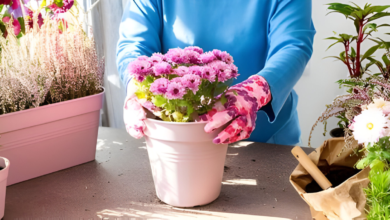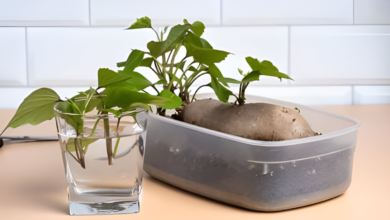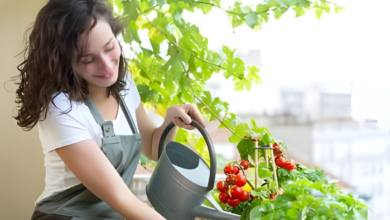Watering Bamboo Plants in Pots: Best Tips

Introduction to Watering Bamboo Plants in Pots
Watering Bamboo Plants in Pots can add a touch of beauty and serenity to any space. However, proper watering is crucial for the health and vitality of these captivating plants. This blog post will guide you through the best practices for watering bamboo in pots, address common challenges, and provide useful tips to ensure your bamboo thrives.
Understanding Bamboo’s Watering Needs
Before diving into watering techniques, it’s essential to understand the specific water requirements of bamboo. The water needs of bamboo can vary based on the variety and growth stage of the plant. For example, newly planted bamboo may require more frequent watering until it establishes a strong root system.
Factors such as climate, pot size, and soil type also influence the frequency of watering. While bamboo prefers consistently moist soil, overwatering can be detrimental. It’s crucial to strike a balance and determine the ideal soil moisture levels for your bamboo plants.
To ensure optimal watering, it’s vital to recognize the signs of overwatering or underwatering. Overwatered bamboo may exhibit yellowing leaves, while underwater bamboo will have dry, crispy foliage. Additionally, selecting the appropriate pot size and ensuring proper drainage are key to effective water management.
Best Watering Practices for Potted Bamboo
To maintain the health and vitality of your potted bamboo, it’s important to follow these watering techniques:
1. Watering at the base without wetting the foliage
When watering your bamboo, it’s best to target the base of the plants rather than wetting the foliage. This prevents the leaves from becoming overly saturated, reducing the risk of fungal diseases.
2. Deep watering to encourage deep root growth
To promote strong and healthy root growth, deep watering is recommended. This involves saturating the soil to a depth of at least 6 inches. Deep root growth helps the bamboo plants become more resilient and better able to withstand dry periods.
3. Applying water evenly to prevent uneven moisture levels
Evenly distributing water throughout the pot is key to preventing uneven moisture levels. This ensures all parts of the root system receive adequate hydration. Avoid concentrated watering in one spot, as it may lead to waterlogging or dry pockets within the soil.
When it comes to seasonal watering adjustments, consider the climate and the growth cycle of your bamboo.
1. Tailoring watering frequency during hot and dry periods
During hot and dry periods, your potted bamboo may require more frequent watering. Pay attention to soil moisture levels and adjust your watering schedule accordingly. Mulching the soil surface can also help retain moisture and protect against evaporation.
2. Modifying watering routines during cold or dormant seasons
In colder or dormant seasons, bamboo plants require less frequent watering. As growth slows down during these periods, reducing watering can prevent waterlogged soil and root rot. Remember to adjust your watering routine to align with the needs of the bamboo variety you have.
3. Adapting watering practices for specific bamboo varieties
Different bamboo varieties have varying water requirements. Some varieties prefer slightly drier conditions, while others thrive in moist soil. Research the specific needs of your bamboo variety and adjust your watering practices accordingly.
When it comes to water sources, quality and pH play a crucial role.
1. Understanding the impact of water pH and mineral content on bamboo’s health
Bamboo plants prefer slightly acidic to neutral pH levels, typically ranging from 5.5 to 7.5. Water with a high mineral content or extreme pH levels can negatively affect the health of your bamboo. Consider using rainwater or filtered water to maintain optimal conditions.
2. Filtering or treating water to mitigate potential harmful substances
Municipal water sources may contain chlorine or other chemicals that can harm your bamboo. Consider using a water filtration system or allowing tap water to sit for 24 hours before use. This allows time for chlorine to dissipate.
3. Considering rainwater harvesting as an eco-friendly watering option
Rainwater is an excellent choice for watering bamboo, as it is naturally free of chemicals and has a balanced pH. Consider setting up a rainwater harvesting system to reduce your environmental impact and provide optimal water quality for your bamboo plants.
Ensuring Proper Drainage and Moisture Control
Proper drainage and moisture control are essential for the health of your potted bamboo. Follow these tips to ensure optimal conditions:
1. Selecting the appropriate potting soil for bamboo plants
Choosing the right potting soil is crucial for bamboo plants. Opt for well-draining soil that allows excess water to escape easily. A suitable soil composition includes a mixture of loam, sand, and organic matter.
2. Adding organic matter for enhanced drainage and moisture retention
Incorporating organic matter, such as compost or peat moss, into your potting soil can improve both drainage and moisture retention. These amendments provide a well-balanced environment for the bamboo’s root system.
3. Avoiding heavy or dense soils that hinder proper drainage
Heavy or dense soils can cause water to accumulate, leading to waterlogging and root rot. Avoid using these types of soils for your bamboo plants. Instead, aim for well-draining options that allow excess water to move away from the roots.
In addition to soil composition, effective drainage systems are vital for potted bamboo.
1. Choosing pots with drainage holes and using saucers carefully
Select pots that have drainage holes to allow excess water to escape. However, be cautious when using saucers; they can lead to water accumulation if not used correctly. Empty saucers shortly after watering to prevent waterlogging.
2. Elevating pots to improve airflow and prevent water accumulation
Elevating your pots on pot feet or bricks can improve airflow and prevent water accumulation. This helps to avoid stagnant moisture around the roots, reducing the risk of rot.
3. Utilizing alternative drainage solutions like perlite or gravel layers
For bamboo plants that require especially well-drained soil, consider using perlite or gravel layers at the bottom of the pot. These materials facilitate water movement and prevent waterlogged conditions.
To ensure proper moisture control, keep an eye on soil moisture levels.
1. Using moisture meters or finger tests to gauge soil moisture content
Moisture meters or simple finger tests can help you determine soil moisture content. Stick the moisture meter probe or your finger into the soil and assess the moisture level. Aim for a balance between moist and not overly saturated soil.
2. Adjusting watering routines based on moisture readings and plant responses
Based on the moisture readings and your plant’s response, adjust your watering routine. If the soil is consistently wet, reduce the frequency of watering. Alternatively, if the soil feels dry, increase the frequency of watering. Observing your bamboo’s growth and health can provide valuable cues.
3. Implementing watering schedules rather than relying on guesswork
Consistency is key when it comes to watering bamboo plants. Instead of relying on guesswork, it’s beneficial to establish a watering schedule. This ensures that your bamboo receives regular moisture without the risk of overwatering or underwatering.
Summary to Watering Bamboo Plants in Pots
A recap of the essential points for watering bamboo plants in pots:
- Understand bamboo’s water requirements based on variety and growth stage.
- Recognize signs of overwatering or underwatering.
- Choose the right pot size and ensure proper drainage.
- Water at the base, avoiding wetting the foliage.
- Deep watering encourages deep root growth.
- Apply water evenly, preventing uneven moisture levels.
- Tailor watering frequency based on climate and growth cycle.
- Consider water quality and pH.
- Select suitable potting soil and add organic matter.
- Implement effective drainage systems.
- Monitor soil moisture levels and adjust watering accordingly.
- Establish a watering schedule for consistency.
FAQs Watering Bamboo Plants in Pots
- Can bamboo be overwatered?
- While bamboo requires consistent moisture, overwatering can harm its health. Excessive moisture can lead to root rot and other issues.
- How much water should I put in my bamboo plant?
- The exact amount of water needed depends on various factors, including pot size and climate. Aim for moist, well-draining soil without causing waterlogging.
- Why are my bamboo leaves turning yellow?
- Yellowing leaves may indicate overwatering. Check the soil moisture levels and adjust watering as needed. Other factors, such as nutrient deficiencies, may also contribute to yellowing leaves.
- Does bamboo grow faster with water?
- While water is essential for bamboo growth, excessive water doesn’t necessarily result in faster growth. Providing optimal moisture and balanced conditions is key to healthy bamboo growth.
- Can bamboo survive without water for a few days?
- Bamboo plants prefer consistent moisture, but they can generally tolerate short periods without water. However, extended periods of drought can stress the plants and affect their long-term health.
By following these best tips, you can ensure that your potted bamboo plants thrive and bring natural beauty to your space. Remember to monitor your plants closely, adjust watering practices as needed, and provide the optimal environment for your bamboo’s growth.
“Proper watering is the lifeline of healthy bamboo plants. With mindful practices and a keen eye, you can nurture the beauty and grace of bamboo in pots.”




